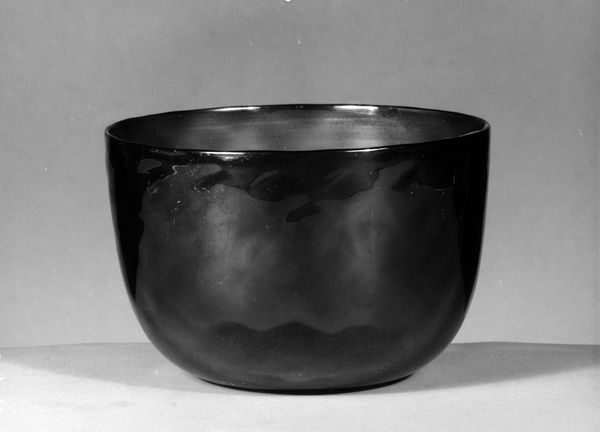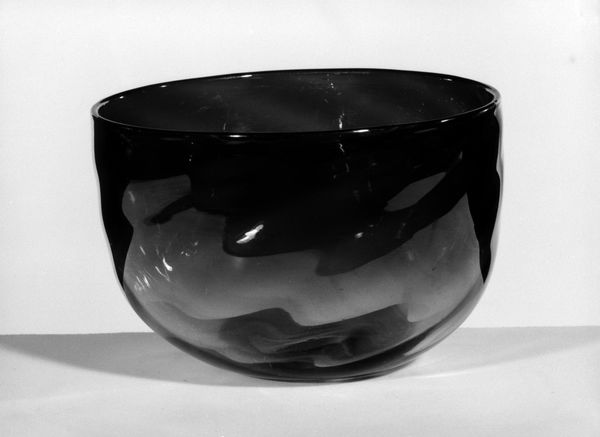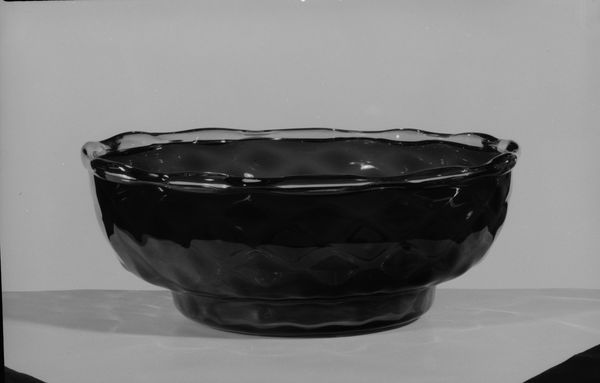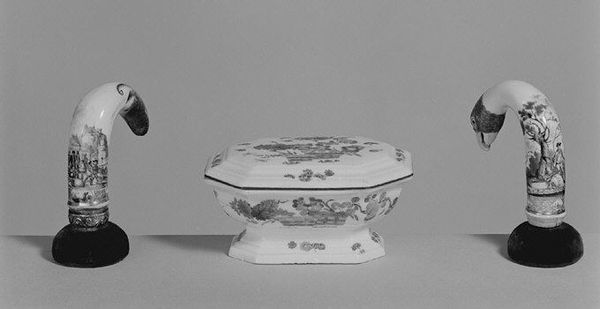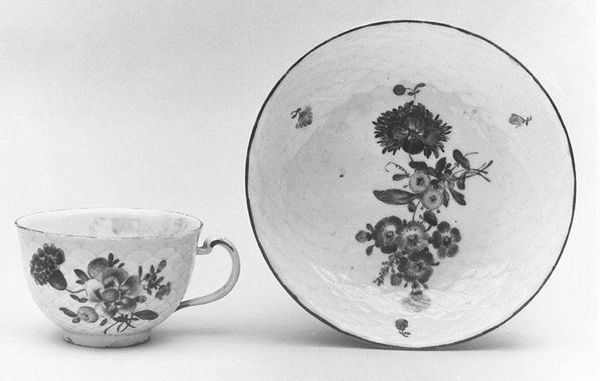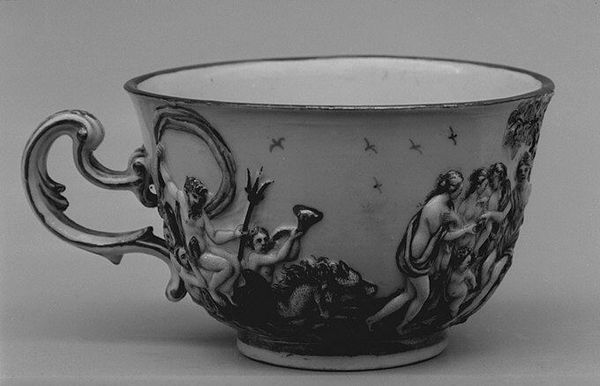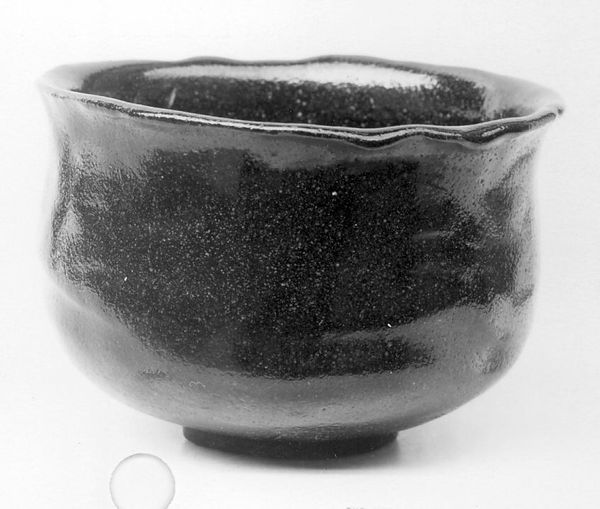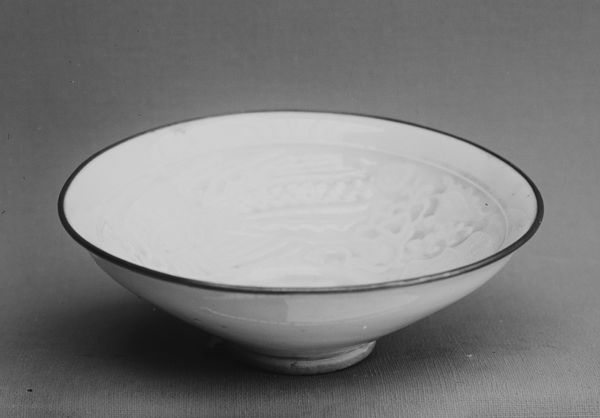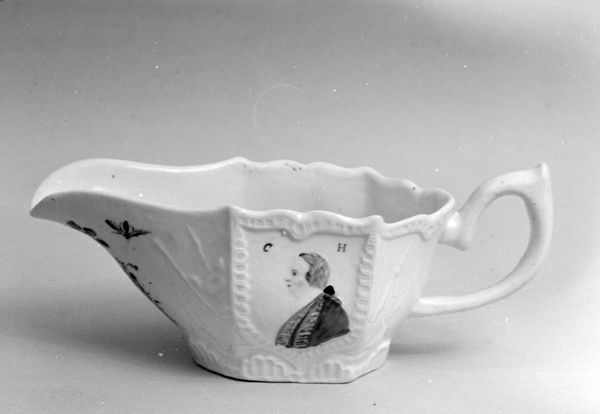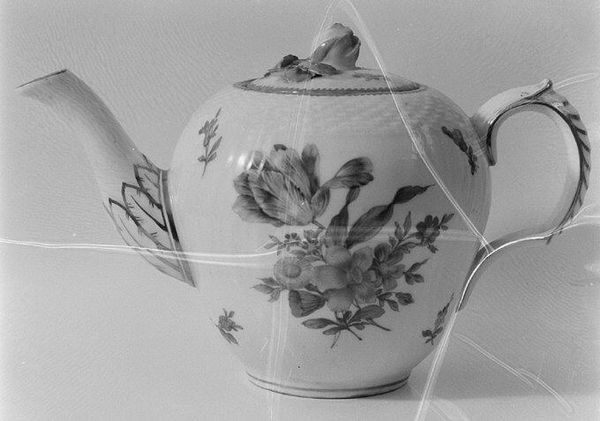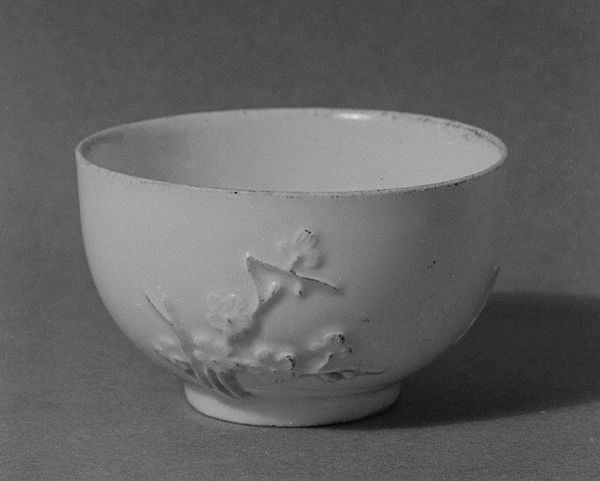
ceramic, glass
#
ceramic
#
glass
Dimensions: H. 2 in. (5.1 cm); Diam. 2 1/2 in. (6.4 cm)
Copyright: Public Domain
Editor: This cup, made from ceramic and glass, dates back to sometime between 1870 and 1890, and was crafted by Challinor, Taylor and Company. I find the contrasting white and swirling dark stripes so captivating. What’s your interpretation of it? Curator: It's a fascinating object, isn’t it? Considering the historical context, decorative arts like this cup were often displays of status and taste during the late 19th century. The intricate swirling pattern suggests mass production attempting to emulate marble or agate, which speaks to the democratizing impulses of the industrial revolution alongside enduring class distinctions. Do you notice the form? Editor: Yes, the handles give it an almost classical feel, maybe invoking ancient pottery forms. Curator: Exactly! The deliberate appropriation of classical forms combined with industrialized production is interesting. Think about who would have purchased such an object, and in what social settings it would have been used or displayed. Would it have been considered a precious heirloom? Or simply a functional item with aspirations of elegance, made affordable through mass production? Editor: So, it reflects both an admiration for tradition and a changing society. Did the design perhaps intend to appeal to a broader audience, beyond just the wealthy elite? Curator: Precisely! The politics of imagery here become very telling: a striving for refinement now accessible, in some form, to a wider public. Understanding the marketplace that created and consumed it reveals much about the social ambitions of the era. Editor: That's really made me think about everyday objects in a whole new way. I see the cup as much more than just something to drink from. Curator: Indeed. Its beauty resides in its role as a reflection of its historical moment, showing material culture produced and valued by a wider segment of society.
Comments
No comments
Be the first to comment and join the conversation on the ultimate creative platform.
